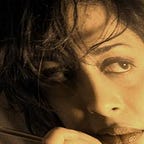All Aboard: Murder on the Orient Express (1974)
Sidney Lumet’s adaptation of the classic Agatha Christie novel aims for nostalgic glamour — with mixed results.
As the Queen of Mystery, Agatha Christie has outsold almost every other novelist in the world, so it’s no wonder that filmmakers are eager to adapt her stories. With its exotic locale and colorful characters — as well as a reference to real-life true crime — Murder on the Orient Express is probably one of her most famous books. Christie was notoriously scornful of any adaptations of her novels and with the exception of The Mousetrap (the longest running play ever), none of them were notable successes. That changed with Sidney Lumet’s 1974 film version of Murder on the Orient Express.
The Story
Published in 1934, the story centers around a group of passengers traveling on the famed Orient Express, a luxury train that ran from Istanbul to major cities in Europe. The passenger list also include Belgian detective Hercule Poirot, as well as host of colorful American and European characters gwho board the train along the way,. When unlikable American businessman Samuel Ratchett is found in his car stabbed to death multiple times, Poirot is asked to solve the case. Things get more tense as a snowfall blocks the train and traps all the suspects with the murderer. The investigation reveals that Ratchett as the mastermind behind the infamous kidnapping and murder of a toddler years ago, and therefore had many enemies. The novel’s ending is rightfully celebrated, simply because mystery readers had never encountered anything like it before.
The Adaptation
Most mysteries start out with a dead body and end with the arrest of a killer. But Murder on the Orient Express turns that trope on its head. Christie clearly used the real life tragedy of the Lindbergh kidnappings as her inspiration, allowing her to tap into themes of injustice and retribution. But what made this novel so revolutionary was how it completely obliterated the traditional conventions of the mystery genre. When the train arrives, the authorities will be told a lie — that a stranger boarded the train and killed Ratchett. The solution to the real murder remains a secret.
Christie was very dissatisfied with previous film adaptations, which played freely with plot and characters to fit the expectations of cinemagoers, and gave her permission for the adaptation of Murder on the Orient Express very reluctantly. From the beginning, the project attracted a cast of stars used to their own top billing: Lauren Bacall, Ingrid Bergman, Sean Connery, Vanessa Redgrave, Anthony Perkins and Albert Finney as Hercule Poirot. The movie marked a turning point for adaptations of Agatha Christie novels, but while there were many more big screen versions of her novels, few garnered as much public acclaim or positive reviews.
Much of this has to do with the cast itself; its’s a who’s who of the Golden Age of Hollywood, interpreting classic of the mystery genre. The direction, rightfully, focuses on the conversations between the characters as they reveal their true selves to Poirot. Lumet was a filmmaker known for his psychological realism; his characters often wrestle with hidden emotions like guilt or doubt. As befitting the caliber of the cast, the film often showcases one actor at a time, which adds nuance to the often stereotypical characters.
Lumet is faithful to the book with very few exceptions; he does allow Anthony Perkins to do a version of his Norman Bates character rather than the coolheaded secretary envisioned by Christie. There’s also an awkward scene at the end where the characters congratulate themselves, which indicates a sense of triumph that’s clearly avoided in the novel. Lumet’s films often end with a feeling of catharsis; the characters go through painful emotions and ultimately release them. This last scene works for Lumet’s style, but is antithetical to Christie’s love of order and justice. Very few of her villains are celebrated in the end; if they are, they are usually not villains.
The weakest link is Albert Finney. He was relatively young to play Poirot, but with his Brilliantined hair and strangulated stance, he seems far more aged than he should be. He is raucous when he should be thoughtful, stiff when he should be elegant. Poirot is often seen as a comical character in the novel, but Finney’s interpretation is simply a parody, which seems to have been the intention. There’s never a sense that we understand him as a person rather than a grotesque combination of fussiness and bombastic mannerisms. The parody of her detective irritated Christie; she thought Finney was the one weak point of the movie. Poirot is supposed to be the center of the story, the character with the most lines, and the one the audience follows, trusts, and identifies with. And yet, he seems the least human of all the characters.
The expense of the film is clear from the start, and director Sidney Lumet used on a real railway line to add realism to the project. The lush costumes and majestic score harken back nostalgically to a simpler, more luxurious time. So why does the movie seem so artificial? The actors seem pasty in the makeup, and the grandeur of the Orient Express seems muted and shot coldly. It’s possible that Lumet shot everything in cool light to heighten the sense of claustrophobia, but it detracts from the luxuriousness that the film is trying to capture. It does have a distracting theatricality to it; despite the economic camera work, it occasionally feels like a staged play. In the end, Murder on the Orient Express is faithful to the novel, but fails to capture its glorious, revolutionary spirit.
